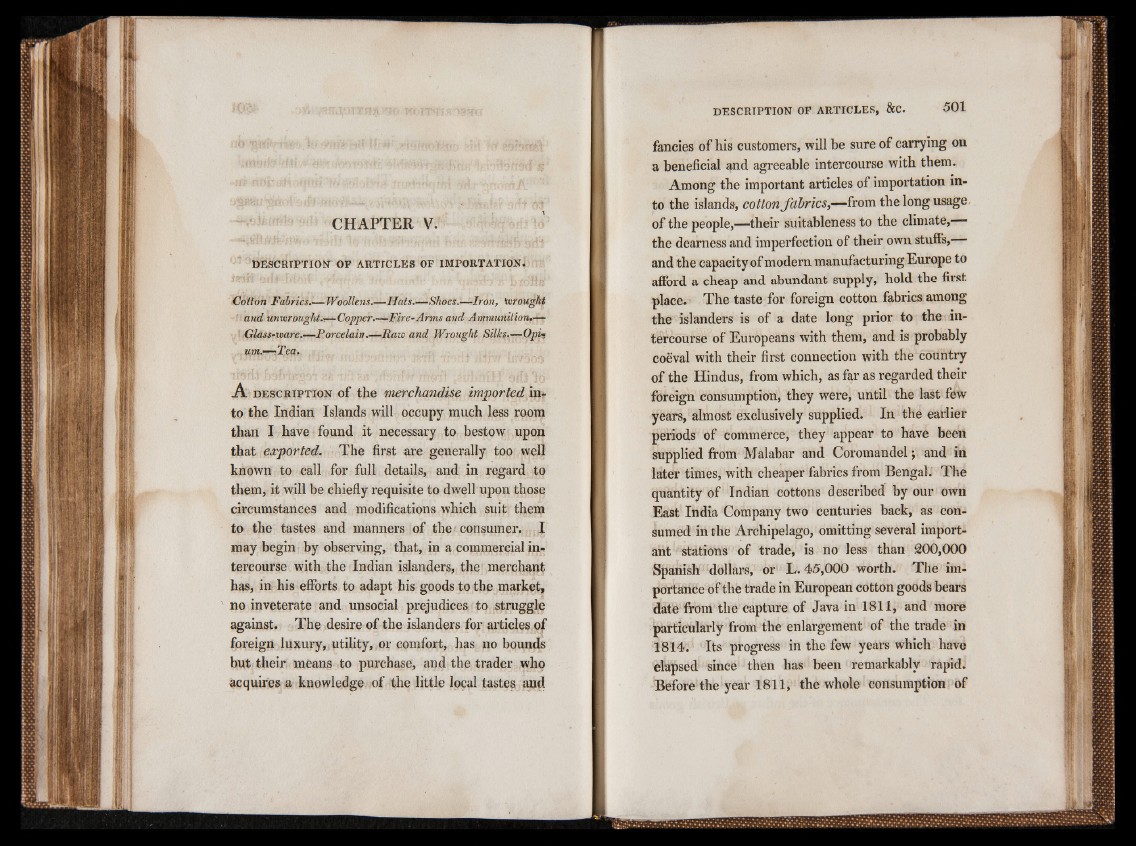
CH A PTER V.
DESCRIPTION OF ARTICLES OF IMPORTATION«
Cotton Fabrics—Woollens Hats.— Shoes.— Iron, 'wrought
and unwrought...— Copper.— Fire-Arms and Ammunition.—
Glass-ware.— Porcelain.— Raw and Wrought Silks,— Opij
um.—Tea,
A d e s c r i p t i o n of the merchandise imported in*
to the Indian Islands will occupy much less room
than I have found it necessary to bestow upon
that exported. The first are generally too well
known to call for full details, and in regard to
them, it will be chiefly requisite to dwell upon those
circumstances and modifications which suit them
to the tastes and manners of the consumer. I
may begin by observing, that, in a commercial intercourse
with the Indian islanders, the merchant
has, in his efforts to adapt his goods to the market,
no inveterate and unsocial prejudices to struggle
against. The desire of the islanders for articles of
foreign luxury, utility, or comfort, has no bounds
but their means to purchase, and the trader who
acquires a knowledge of the little local tastes and
fancies of his customers, will be sure of carrying on
a beneficial and agreeable intercourse with them.
Among the important articles of importation into
the islands, cotton fabrics,—fr o m the long usage
of the people,—their suitableness to the climate,
the dearness and imperfection of their own stuffs,
and the capacity of modern manufacturing Europe to
afford a cheap and abundant supply, hold the first
place. The taste for foreign cotton fabrics among
the islanders is of a date long prior to the intercourse
of Europeans with them, and is probably
coeval with their first connection with the country
of the Hindus, from which, as far as regarded their
foreign consumption, they were, until the last few
years, almost exclusively supplied. In the earlier
periods of commerce, they appear to have been
supplied from Malabar and Coromandel; and in
later times, with cheaper fabrics from Bengal. The
quantity of Indian cottons described by our own
East India Company two centuries back, as consumed
in the Archipelago, omitting several important
stations of trade, is no less than 200,000
Spanish dollars, or L. 45,000 worth. The importance
of the trade in European cotton goods bears
date from the capture of Java in 1811, and more
particularly from the enlargement of the trade in
1814. Its progress in the few years which have
elapsed since then has been remarkably rapid.
Before the year 1811, the whole consumption of